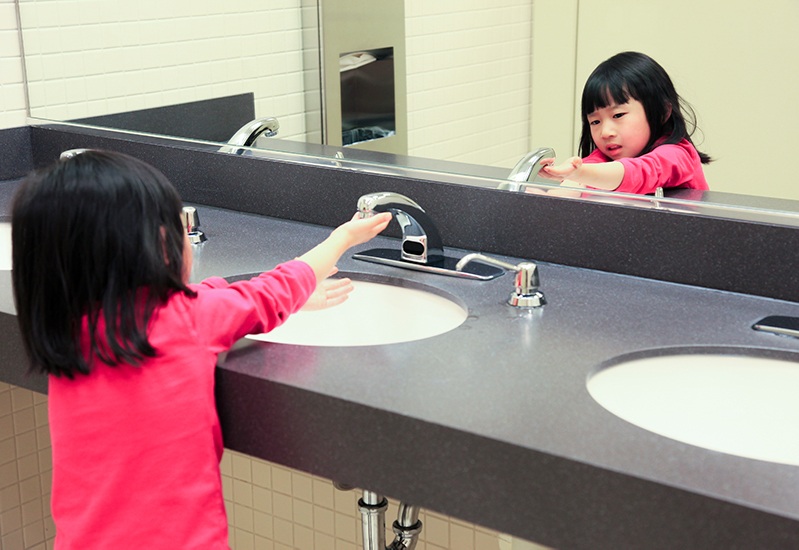Check Your Doors! School Governors Fined After Finger Amputation

If you haven’t run a thorough safety check on your doors in the past few years, this recent story might shock you.
In a traumatic turn of events, a four-year-old primary school pupil’s fingers were trapped in a toilet door, resulting in partial amputation.
The board of governors pleaded guilty to breaching Section 3(1) of the Health and Safety at Work Act etc. 1974 and was fined £4,000 plus costs of £1,750.
Where did the school go wrong and what can you do to prevent accidents like this?
How did the accident happen?
Manchester Magistrates’ Court heard how the pupil, who had been at St Joseph’s RC Primary School for three weeks, was allowed to access the girls’ toilet alone.
She was heard screaming by members of staff, who found her with her fingers trapped in the hinges of the toilet door. These injuries later resulted in partial amputation of her right middle finger.
Why was the school at fault?
The door was not fitted with a finger guard, a piece of plastic running along both sides at the hinge edge. Finger guards are designed to stop small fingers from getting trapped in the space as it closes.
There had been no guard there for around five years, since the completion of some building works. There was also no monitoring system to pick up this omission and, in addition, staff members had said that the door was too heavy for the children to open yet nothing had been done to resolve this.
According to the HSE inspector in charge of the investigation, the injury could have been easily prevented if the finger guard had been in place or if the reception pupils had been allowed to use the nursery toilets (where there were adequate safety measures).
How can you avoid door accidents in your organisation?
There are no specific regulations stating that finger guards are compulsory, but it is common practice to install them in schools with young children.
Here are some ideas to help prevent injuries:
- Fit guards to any door an unsupervised child might use – it’s reasonably cheap and easy. With doors used by small children, finger guards are also often installed on the side of the door where the hinge pins are seen to prevent risk
- Consider self-closing devices to reduce the pace of door closure (although this will not completely eliminate the risk for young children)
- Alternative measures to avoid accidents include holding open or removing a door, or fitting a sliding door. Check with your fire risk assessor before doing this. Other options may be to restrict access to an area or supervise its use
Are you following health & safety guidelines?
The responsibility for health & safety in schools lie with either the Local Authority (LA) or Governing Body, depending on what type of school it is.
LAs are employers for community (and community special) schools, voluntary controlled schools and maintained nursery schools.
Governing Bodies are employers for foundation (and foundation special) schools and voluntary aided schools.
If the Local Authority is the employer: It must provide Health & Safety guidance to those schools and services. It must also ensure that staff members are trained in their health and safety responsibilities and those who are delegated health and safety tasks (such as risk assessment) are competent to carry them out.
If the Governing Body is the employer: It must follow the Department of Education’s guidance by “taking reasonable steps to ensure that employees and pupils are not exposed to Health & Safety risks” (on or off school premises).
The guidance refers to the Management of Health and Safety at Work Regulations 1999, which require employers to:
- Assess the risks to staff and others affected by school activities in order to identify the health and safety measures that are necessary and, in certain circumstances, keep a record of the significant findings of that assessment
- Introduce measures to manage those risks (risk management)
- Tell their employees about the risks and measures to be taken to manage the risks
- Ensure that adequate training is given to employees on health and safety matters
In addition, schools must set out health and safety arrangements in a written health & safety policy.
As a Governing Body of a voluntary added school, you are responsible for health & safety as well as ensuring that controls are in place and working. You can delegate tasks to head teachers or other school staff members.
Five questions to assess your current compliance
- Do you have a written health & safety policy?
- Have responsibilities been agreed and communicated to staff members?
- Have hazards been identified and risk assessments been completed and communicated to staff members?
- Have all controls need been implemented?
- What systems do you have in place to monitor your controls?


